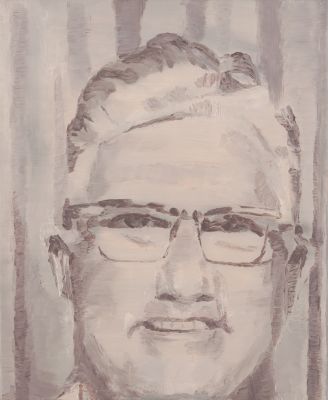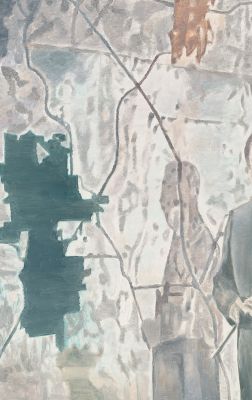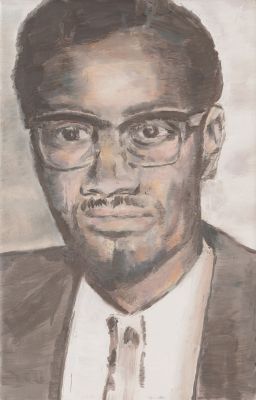Luc Tuymans At MCA
By Ben Schuman Stoler in Arts & Entertainment on Oct 6, 2010 7:00PM
The MCA is, for the most part, as good as its featured exhibition(s). As it happens, there are two excellent exhibitions on display right now, so if you haven’t been to Streeterville’s art district in a while, now’s as good a time to go as ever. Alexander Calder and Contemporary Art: Form, Balance, and Joy ends October 17th, and, thankfully, there are months yet until the newly installed Luc Tuymans retrospective closes.
The first thing that hits you when you walk into the Tuymans show is NOT being hit. It is incredibly refreshing to walk into a contemporary art show and not be struck immediately with the feeling that the pieces around you are fighting for your attention, clamoring over each other, screaming at you, desperate. No. Thanks to the soft, pastel-y colors and the consistency of medium (the retrospective is maybe 95% oil on canvas), you walk in with ease. You walk in because you want to. And then you realize there’s a trick.
Because as inviting as the palette is, some of the paintings play off and summon emotions, thoughts, and memories that are anything but comfortable. That soft, almost tenderly rendered face? That’s Joseph Milteer, Ku Klux Klansmen. That other soft face? That’s Patrice Lumumba, the former Prime Minister of the Democratic Republic of Congo, whom the CIA assassinated. There are, in other words, absences in these pieces. Pieces cropped off, faces murky, backgrounds unclear. It's almost as though Tuymans removed the stings out of 1,000 wasps, and you see the wasps, but you know, you can feel, the stingers laying in a row somewhere. Political and emotional consequences are immediately apparent without bashing you on the head or seeking cheap gratification points. A concentration camp is a gentle but hideous landscape. W (President George W., that is) is hidden behind lines and shadows.
But you don’t get the emotional reward unless you actually look at these paintings. This, thank god, is not the kind of exhibition that can be explained and felt as much through an essay as through seeing the pieces in person. Ballroom Dancing is clearly a play on appearance and beauty and even grace and form. You can see that in a book. But only in person does the man turn into a Frank Sinatra, his partner some kind of Night of the Living Dead reject.
Even though online or in a book you can get an idea of Tuyman’s deliberate technical choices - cropping an image just so, for example - it’s harder to dig his total aesthetic without being surrounded by his pieces. In a room of reserved Tuymans pieces, each one slightly understated and yet packed to the brim with ideas of image and history and technique, bigger consequences present themselves. The video, special to this Chicago exhibition, helps make it clear that Tuymans’s is nothing less than a comprehensive aesthetic. An extensive approach to image and experience.
Towards the end of the show, a room of “source materials” grounds the superstar Belgian artist firmly in real life, in the real world. Where in some exhibitions you would see artist inside joke on top of artist inside joke on top of artist inside joke, here are the actual magazine or Polaroid cut outs of Tuymans’s subjects.
In a world post-Warhol in which images can be considered meaningless simply in duplication, Tuymans stands strong. Painting, too, comes out on top. One look at the brushstrokes - some of which are boldly, almost aggressively ugly - in any of these pieces makes it clear why oil and canvas are clearly far from the death some have predicted.
If there is one beef with the show it would be with the name of one of the final rooms, “At Random,” which seems to cheapen the clearly not random decisions of absence, subject, and technique that give Tuymans his power. But that’s nitpicking. This exhibition is worth anyone’s time and, hopefully, will help guide further contemporary art in a similarly thoughtful, technical, and potent direction.




